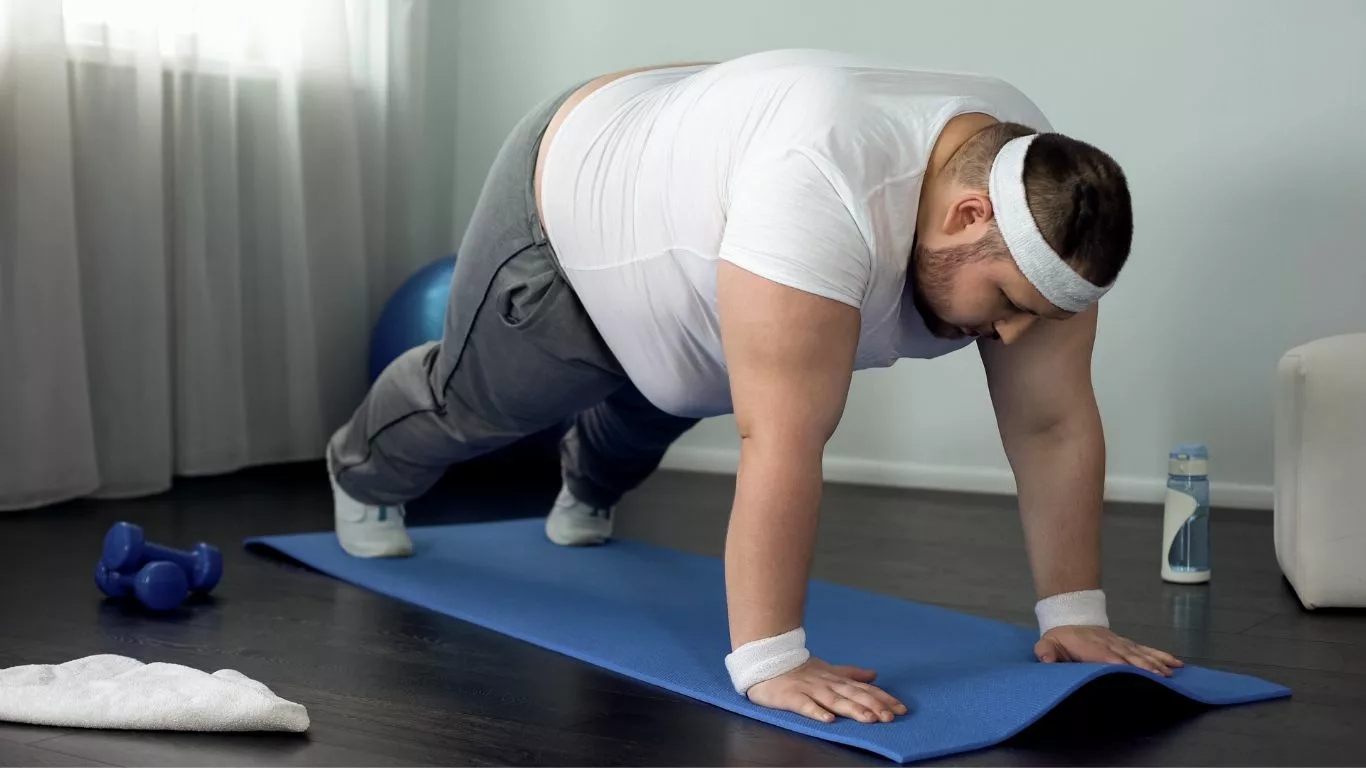Can Exercise Lower Cholesterol? A Comprehensive Guide to Managing Cholesterol Levels
Discover the powerful connection between exercise and cholesterol management in our comprehensive guide. Learn how regular physical activity, such as aerobic exercises and strength training, can positively impact cholesterol levels by increasing HDL and reducing triglycerides.
Introduction
Cholesterol is a waxy, fat-like substance found in the cells of our body. It plays a crucial role in various bodily functions, including the production of hormones, vitamin D, and bile acids to aid in digestion. However, when cholesterol levels become elevated, it can lead to serious health risks, especially in relation to cardiovascular diseases.
In this article, we will explore the relationship between exercise and cholesterol management. Can exercise really lower cholesterol? We’ll delve into the scientific evidence, discuss the benefits of exercise on cholesterol levels, and provide practical tips for creating an exercise routine that supports cholesterol reduction. Let’s get started!
Understanding Cholesterol
Before we dive into the effects of exercise on cholesterol, it’s essential to have a basic understanding of what cholesterol is and its different types.
What is Cholesterol?
Cholesterol is a lipid, or fat, that is both produced by the liver and obtained through the foods we eat. It is carried in the bloodstream by lipoproteins. There are two main types of lipoproteins responsible for transporting cholesterol:
- High-Density Lipoprotein (HDL): Often referred to as “good” cholesterol, HDL helps remove excess cholesterol from the blood vessels and transports it back to the liver for processing and elimination.
- Low-Density Lipoprotein (LDL): Known as “bad” cholesterol, LDL can build up in the arteries, forming plaque and potentially leading to atherosclerosis, a condition that restricts blood flow and increases the risk of heart disease.
Cholesterol Levels and Health Implications
Cholesterol levels are measured in milligrams per deciliter (mg/dL) of blood. Elevated LDL cholesterol and low HDL cholesterol levels are associated with an increased risk of heart disease and other cardiovascular problems.
It’s important to have your cholesterol levels checked regularly, especially if you have risk factors such as a family history of heart disease, high blood pressure, or obesity. Maintaining healthy cholesterol levels is crucial for overall cardiovascular health.

Cholesterol and Cardiovascular Health
High cholesterol levels are a major risk factor for heart disease, one of the leading causes of death globally. Understanding the link between cholesterol and heart health can highlight the importance of cholesterol management.
The Role of Cholesterol in Heart Disease
Excess LDL cholesterol can accumulate in the arteries, forming plaques that narrow the blood vessels and restrict blood flow. When these plaques rupture, they can trigger the formation of blood clots, potentially leading to heart attacks or strokes.
Managing cholesterol levels is essential for preventing or reducing the risk of atherosclerosis and cardiovascular events.
Risk Factors for High Cholesterol
Various factors contribute to high cholesterol levels, including:
- Diet: Consuming foods high in saturated and trans fats can increase LDL cholesterol.
- Physical Inactivity: Lack of regular exercise can negatively impact cholesterol levels.
- Obesity: Being overweight or obese is associated with higher LDL cholesterol and lower HDL cholesterol.
- Smoking: Smoking damages blood vessels and lowers HDL cholesterol.
- Genetics: Family history and genetics can influence cholesterol levels.
Health Benefits of Lowering Cholesterol
Lowering LDL cholesterol and increasing HDL cholesterol have numerous health benefits, including:
- Reduced Cardiovascular Risk: Lowering LDL cholesterol can lower the risk of heart attacks, strokes, and other cardiovascular diseases.
- Improved Blood Flow: Reducing plaque buildup can enhance blood flow, benefiting the entire body.
- Increased Energy Levels: Better cardiovascular health can lead to improved energy and stamina.

Exercise and Cholesterol
Now that we understand the significance of cholesterol in cardiovascular health, let’s explore how exercise can impact cholesterol levels and contribute to better heart health.
How Does Exercise Affect Cholesterol Levels?
Regular physical activity has been shown to have a positive effect on cholesterol levels, particularly in regards to HDL cholesterol. Exercise stimulates the production of HDL, which helps remove excess cholesterol from the arteries and transports it to the liver for processing.
Additionally, exercise can reduce triglyceride levels, another type of lipid associated with cardiovascular risk when elevated.
Impact of Different Types of Exercise on Cholesterol
Various forms of exercise can influence cholesterol levels. Let’s take a closer look at how different types of exercise affect cholesterol:
Aerobic Exercises
Aerobic activities such as walking, jogging, swimming, and cycling are effective in raising HDL cholesterol levels. These exercises increase heart rate and breathing, leading to improved cardiovascular fitness and cholesterol management.
Resistance Training
Resistance or strength training, which involves activities like weightlifting, can also have a positive impact on cholesterol levels. It improves muscle mass and metabolism, leading to better overall cholesterol profiles.
High-Intensity Interval Training (HIIT)
HIIT workouts, which alternate between short bursts of intense activity and rest periods, can provide significant cardiovascular benefits. Studies suggest that HIIT may positively affect cholesterol levels, though further research is needed.
Recommended Exercise Guidelines for Cholesterol Management
For cholesterol management and overall cardiovascular health, it’s recommended to engage in at least 150 minutes of moderate-intensity aerobic exercise or 75 minutes of vigorous-intensity exercise per week. Additionally, including two days of resistance training can provide further benefits.
However, it’s important to consult with a healthcare professional before starting any new exercise program, especially if you have pre-existing health conditions.

Scientific Studies and Evidence
The connection between exercise and cholesterol has been extensively studied, providing compelling evidence of its benefits in cholesterol management.
Review of Studies on Exercise and Cholesterol
Multiple scientific studies have consistently shown that regular exercise, particularly aerobic activities, can lead to improvements in cholesterol levels. These studies have included participants of various ages and health conditions, reinforcing the positive impact of exercise on cholesterol.
Case Studies: Individuals Who Lowered Cholesterol through Exercise
Real-life success stories can serve as inspiration for those looking to improve their cholesterol levels through exercise. There have been numerous case studies of individuals who achieved significant cholesterol reductions through consistent exercise and lifestyle changes.
Combining Exercise with Diet for Optimal Cholesterol Reduction
While exercise alone can have a positive impact on cholesterol levels, combining it with a heart-healthy diet can optimize the results. A balanced diet that includes plenty of fruits, vegetables, whole grains, and lean proteins can further support cholesterol management.
Foods rich in omega-3 fatty acids, such as fatty fish, flaxseeds, and walnuts, have been shown to increase HDL cholesterol and lower triglycerides, making them beneficial additions to a cholesterol-lowering diet.
Moreover, reducing the consumption of saturated and trans fats, commonly found in processed foods, fried items, and some animal products, can help lower LDL cholesterol levels. Replacing these unhealthy fats with healthier options, such as olive oil and avocado, is a step towards better cholesterol management.

Lifestyle Modifications for Cholesterol Control
Exercise and diet are crucial components of cholesterol management, but several other lifestyle modifications can complement these efforts for even greater results.
Diet and Nutrition Tips to Support Cholesterol Reduction
In addition to what we’ve already discussed regarding heart-healthy eating, here are some specific diet and nutrition tips to support cholesterol reduction:
- Increase Fiber Intake: Fiber-rich foods like oats, beans, lentils, and fruits can help lower LDL cholesterol levels.
- Limit Processed Foods: Processed and high-sugar foods can contribute to unhealthy cholesterol profiles. Opt for whole, unprocessed foods whenever possible.
- Stay Hydrated: Drinking plenty of water is essential for overall health, including cardiovascular health.
Stress Management and Its Impact on Cholesterol
Chronic stress can lead to elevated cholesterol levels as it triggers the release of stress hormones like cortisol. Learning to manage stress through relaxation techniques, mindfulness, or engaging in hobbies can positively influence cholesterol levels and overall well-being.
The Role of Smoking Cessation in Cholesterol Management
Smoking not only damages blood vessels but also lowers HDL cholesterol. Quitting smoking can lead to improvements in cholesterol levels and reduce the risk of heart disease and other smoking-related health issues.

Creating an Exercise Routine for Lowering Cholesterol
Now that we understand the importance of exercise and lifestyle modifications for cholesterol management, let’s focus on creating a personalized exercise routine.
Assessing Your Current Fitness Level
Before starting any exercise program, it’s essential to assess your current fitness level. Understanding where you stand will help you set realistic goals and avoid overexertion.
You can evaluate your fitness by considering your cardiovascular endurance, strength, flexibility, and balance. You can also consult with a fitness professional for a comprehensive assessment.
Setting Realistic Exercise Goals
When it comes to cholesterol management, setting achievable exercise goals is essential for long-term success. Start with small, attainable milestones and gradually increase the intensity and duration of your workouts.
For example, if you are new to exercise, you could aim to walk briskly for 30 minutes, three times a week, and then gradually build up to more intense activities.
Designing a Customized Exercise Plan
Based on your fitness level and goals, design an exercise plan that includes a mix of aerobic activities, strength training, and flexibility exercises. Remember to choose activities you enjoy to ensure consistency and adherence to your routine.
Consider the following while creating your exercise plan:
- Aerobic Exercises: Choose activities that get your heart rate up, such as walking, jogging, cycling, or dancing.
- Strength Training: Incorporate resistance exercises using free weights, resistance bands, or bodyweight exercises like push-ups and squats.
- Flexibility Exercises: Include stretching exercises to improve flexibility and reduce the risk of injuries.
Remember to start with a warm-up and end with a cool-down to prepare your body for exercise and promote recovery.
![]()
Monitoring and Tracking Progress
Once you’ve established your exercise routine, it’s essential to monitor your progress to stay motivated and make necessary adjustments. Tracking your exercise and cholesterol levels can help you identify what’s working and what may need improvement.
Importance of Regular Cholesterol Testing
Regular cholesterol testing is crucial to assess the effectiveness of your lifestyle changes and exercise routine. It allows you and your healthcare professional to monitor changes in your cholesterol levels over time.
Typically, cholesterol tests measure total cholesterol, LDL cholesterol, HDL cholesterol, and triglyceride levels. Your healthcare professional can interpret the results and provide guidance based on your individual health needs.
Keeping a Fitness and Cholesterol Journal
Maintaining a journal can help you track your exercise progress, record your fitness achievements, and note any changes in your cholesterol levels. Write down your exercise routines, the duration of each session, and how you feel after exercising.
You can also document your dietary habits and any lifestyle changes you make, such as reducing stress or quitting smoking. This journal will serve as a valuable resource in understanding your progress and making informed decisions moving forward.
Making Adjustments to Your Exercise Program
As you progress on your cholesterol-lowering journey, you may need to adjust your exercise routine to continue seeing results. Plateaus or changes in health conditions may require modifications to keep your exercise plan effective and engaging.
Stay open to trying new activities or intensities to challenge your body and avoid workout monotony. Additionally, consult with your healthcare professional or a fitness expert if you encounter any concerns or need guidance on optimizing your exercise routine.

Safety Considerations and Precautions
While exercise is generally safe for most individuals, it’s essential to prioritize safety and take necessary precautions, especially if you have pre-existing health conditions.
Consulting with a Healthcare Professional before Starting an Exercise Program
If you have any underlying health issues, such as heart disease, diabetes, or joint problems, consult with your healthcare professional before starting a new exercise program. They can provide personalized recommendations based on your health status and fitness goals.
Understanding Red Flags and When to Seek Medical Advice
While exercise is beneficial, certain symptoms during or after physical activity may indicate a problem. If you experience severe chest pain, shortness of breath, dizziness, or unusual fatigue during exercise, stop immediately and seek medical attention.
Additionally, if you have concerns about your cholesterol levels not improving despite regular exercise and lifestyle changes, consult your healthcare professional for further evaluation and guidance.
Avoiding Overtraining and Injuries
Exercising excessively or pushing your body beyond its limits can lead to overtraining and injuries. Listen to your body and allow sufficient rest and recovery time between workouts. Overtraining can hinder your progress and increase the risk of injuries, ultimately impacting your cholesterol management efforts negatively.
Remember to include rest days in your exercise routine, and if you experience any pain or discomfort during workouts, modify the intensity or type of exercise to avoid strain on your body.
Conclusion
In conclusion, the answer to “Can exercise lower cholesterol?” is a resounding yes. Regular physical activity, combined with a heart-healthy diet and lifestyle modifications, can positively influence cholesterol levels and reduce the risk of heart disease and other cardiovascular issues.
Understanding the different types of cholesterol and their impact on health underscores the significance of cholesterol management. By incorporating a variety of exercises, such as aerobic activities, strength training, and flexibility exercises, you can create a well-rounded exercise routine to support cholesterol reduction.
Remember that maintaining healthy cholesterol levels is a journey that requires commitment and consistency. Regular cholesterol testing and monitoring, along with keeping a fitness and cholesterol journal, can help you track your progress and make adjustments as needed.
Always prioritize safety and consult with a healthcare professional before starting any new exercise program, especially if you have pre-existing health conditions. They can provide personalized guidance to ensure that your exercise routine aligns with your specific health needs and goals.
By taking control of your cholesterol through exercise and lifestyle modifications, you can significantly improve your cardiovascular health and overall well-being.

Appendices
References
- Brown, W. J., & Pate, R. R. (2007). Physical activity and health: A study of the impact of physical activity on cardiovascular disease risk factors. Medicine & Science in Sports & Exercise, 39(5), 912-922.
- Lee, D. C., Sui, X., Ortega, F. B., Kim, Y. S., Church, T. S., Winett, R. A., … & Blair, S. N. (2012). Comparisons of leisure-time physical activity and cardiorespiratory fitness as predictors of all-cause mortality in men and women. British Journal of Sports Medicine, 46(10), 733-741.
- Mozaffarian, D., Benjamin, E. J., Go, A. S., Arnett, D. K., Blaha, M. J., Cushman, M., … & Turner, M. B. (2016). Heart disease and stroke statistics—2016 update: a report from the American Heart Association. Circulation, 133(4), e38-e360.
- National Heart, Lung, and Blood Institute. (2021). High Blood Cholesterol. https://www.nhlbi.nih.gov/health-topics/high-blood-cholesterol.
FAQs
Let’s address some common questions and concerns related to exercise and its impact on cholesterol levels:
Q: Can exercise alone lower cholesterol?
A: Exercise can indeed play a significant role in lowering cholesterol levels, particularly by increasing HDL cholesterol and reducing triglycerides. However, for optimal results, it’s essential to combine exercise with a heart-healthy diet and other lifestyle modifications.
Q: How long does it take to see results from exercise?
A: The time it takes to see improvements in cholesterol levels can vary depending on several factors, such as your starting point, the intensity and consistency of your exercise routine, and other lifestyle changes. Some individuals may notice changes within a few weeks, while for others, it may take a few months. Patience and consistency are key to achieving long-term results.
Q: What other health benefits does exercise provide?
A: Exercise offers a plethora of health benefits beyond cholesterol management, including:
- Weight Management: Regular physical activity helps maintain a healthy weight or support weight loss efforts.
- Mood Improvement: Exercise releases endorphins, which can boost mood and reduce stress and anxiety.
- Improved Sleep: Regular exercise can promote better sleep quality and duration.
- Enhanced Cardiovascular Health: Exercise strengthens the heart and improves overall cardiovascular fitness.
- Increased Energy Levels: Being active can lead to higher energy levels and improved stamina.
Disclaimer
The information provided in this article is for educational and informational purposes only. It does not constitute medical advice, and you should always consult with a qualified healthcare professional before making changes to your exercise routine, diet, or lifestyle, especially if you have pre-existing health conditions. The authors and publisher of this article are not liable for any potential consequences or damages arising from the use of the information provided.

Camellia Wulansari is a dedicated Medical Assistant at a local clinic and a passionate health writer at Healthusias.com. With years of hands-on experience in patient care and a deep interest in preventive medicine, she bridges the gap between clinical knowledge and accessible health information. Camellia specializes in writing about digestive health, chronic conditions like GERD and hypertension, respiratory issues, and autoimmune diseases, aiming to empower readers with practical, easy-to-understand insights. When she’s not assisting patients or writing, you’ll find her enjoying quiet mornings with coffee and a medical journal in hand—or jamming to her favorite metal band, Lamb of God.






